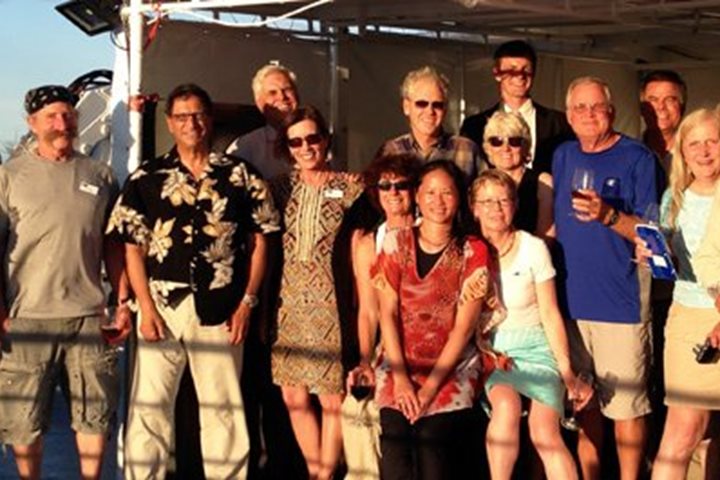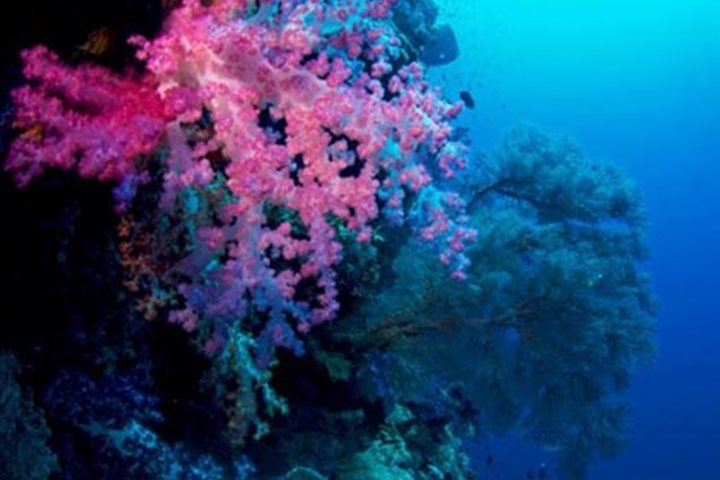The weather was a bit intimidating early this morning as we approached Pulau Njata for an expedition stop. Heavy showers, in addition to the one that had just soaked the ship, could be seen scattered all about the region. Fortunately, the rain clouds quickly moved off and left us with delightful conditions for our morning ashore. Pulau Njata is a small island that is politically part of the Maluku province of Indonesia, but is geographically part of the Lesser Sunda Islands, a long archipelago that stretches from Bali all the way to the Arafura Sea of New Guinea.
From the ship, one could see that this relatively high island holds a dense tropical forest, although much of the exposed vegetation is covered by a tangled matt of “mile-a-minute” vines. What really caught our attention was the long white beach. Once ashore, we discovered that the coastal vegetation is composed mostly of Tournefortia and Scaevola bushes, backed by a thick forest that was found to hold a pretty healthy population of mosquitoes. However, a closer look at the tiny bloodsuckers proved they were not malarial mosquitoes, which was good to know. Initially, most of us strolled on the white sand beach enjoying the plant life, large slabs of ancient fossil reef material, pieces of coral that we could pick up and examine up close, various sea shells, ghost crabs, hermit crabs, pieces of wood riddled with shipworm tunnels, pumice from some distant volcanic eruption, and lots of other bits of flotsam and jetsam, including three tiny dead baby sharks. It was everything we wanted for great beachcombing. Not very many birds were observed, but an adult white-bellied sea eagle was a highlight among the few birds we did see. In addition, many of us went snorkeling straight off from the beach and enjoyed one more opportunity to explore yet another fine Indo-Pacific coral reef system.
With the large island of Timor in the distance, we then sailed three hours southward to the island of Kisar, where we conducted clearance procedures to exit Indonesia. This island is populated and we were shocked to see the difference as to the vegetation, i.e. intense environmental degradation. There was no dense forest cover here, but rather exposed grasslands with isolated pockets of shrubby plants scattered about. There were no big trees. It did, however, allow us to see the geological makeup of the landform, which clearly showed the ancient terraces of past sea levels … something we only guessed at while on Pulau Njata. Once cleared by Indonesia authorities, we set off for the final leg of the voyage to Darwin, Australia.






